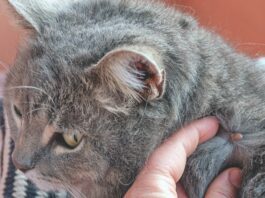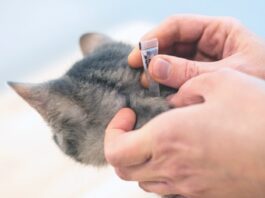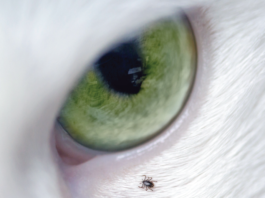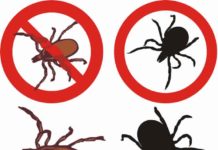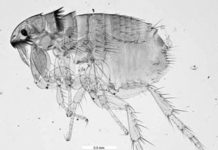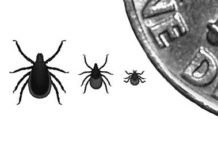Two New Flea-Control Drugs
Two flea control products recently received FDA approval for use in cats 8 weeks of age and older. Both require a prescription from your...
Tick Identification Service Available
In an effort to identify the tick species in pets across the United States, the National Center for Veterinary Parasitology (NCVP) at Oklahoma State University is offering a free tick identification service.
Cats, Ticks, and Lyme Disease
Dwight Bowman, PhD, a parasitology professor in the Department of Microbiology and Immunology at Cornell University College of Veterinary Medicine, is conducting a study on ticks that have been removed from cats. Ticks can carry disease-causing pathogens, such as Lyme disease.
Cats, Ticks, and Lyme Disease
Dwight Bowman, PhD, a parasitology professor in the Department of Microbiology and Immunology at Cornell University College of Veterinary Medicine, is conducting a study on ticks that have been removed from cats. Ticks can carry disease-causing pathogens, such as Lyme disease.
Bobcat Fever Spread by Ticks
Bobcat fever, caused by a protozoa called Cytauxzoon felis, is appearing in Arkansas, Oklahoma, and other southern states, reports KFSM-TV (Fort Smith, Ark).
Ticks Become a Full-time Menace to Cats
If you think your cat cant get ticks or the diseases that they spread, emerging evidence indicates otherwise. While cats, unlike dogs, are fairly resistant to tick-borne diseases, they can be affected, says Meredith L. Miller, DVM, ACVIM, a lecturer in small animal medicine at Cornell University College of Veterinary Medicine.
Short Takes: April 2017
Hundreds of projects are underway across the U.S. and perhaps thousands worldwide using citizen scientists. Theyre volunteers who collect information, usually in cooperation with professional scientists, in fields from computer science to medicine, ecology, outer space and beyond. Rather than the big breakthrough, the results of scientific studies often can indicate whats ineffective in treatment. That was the case when Craig Webb, DVM, Ph.D., at Colorado State University led a clinical trial of a diabetes mellitus treatment.
Cat Scratch Fever Spikes in January
Hand-wrestling your kitten or newly adopted cat may seem like harmless play, but if either would happen to scratch you, you could develop an infection requiring treatment for cat scratch disease (CSD). This rare but potentially serious condition is estimated to affect about 12,500 people annually in the U.S., including 500 hospitalized for treatment. The incidence is higher than medical experts anticipated, according to a new study released by the Centers for Disease Control (CDC).
Indoor Cats Arent Safe From Flea Bites
Although high temperatures and humidity are most favorable to the cat flea from June to August, it breeds in the U.S. year-round. Ctenocephalides felis is an intriguing little insect - no more than an eighth of an inch long but capable of jumping eight inches. A female can lay 50 eggs a day on its host. But heres where intrigue can turn into irritation and beyond.
They’re Always Looking For A Welcome Host
Lyme disease bacteria live in deer ticks that feed on deer, rodents and other hosts. A tick in search of a meal may lurk on a blade of grass or bush. When a promising animal passes by, it grabs hold and hitches a ride. Once aboard, it crawls along, seeking an unobtrusive patch of skin, then latches on with its front legs, cuts open the skin with its mouthparts and inserts a barbed feeding tube that makes removal challenging.
Indoor Cats Arent Safe From Lyme Disease
Ticks used to be most active in spring through autumn, but rising temperatures attributed to global warming have shortened their long winter naps and in some areas eliminated them entirely. The result: Tick bites have become a year-round risk in many parts of the U.S.
Safeguard Your Pets Against Ticks
Ticks are tenacious. They creep up tall grass, weeds and fences — waiting until a passing shadow, a vibration, an odor or even a whiff of exhaled carbon dioxide tells them a possible host might be passing by. Then they let go of their perch and fall, or reach out with their front legs to snag hold of a furry coat (or a pant leg). Once on board, they insert their mouths into their prey and begin their meal. During this feeding, tick saliva mixes with the host’s blood.


